#GothicLiterature
Explore tagged Tumblr posts
Text





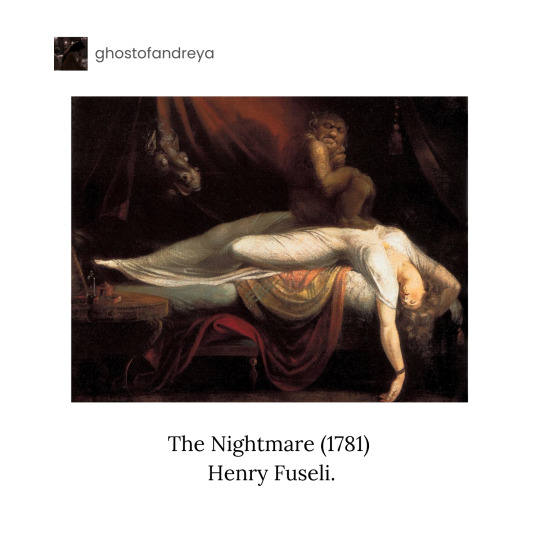
Do you believe in the undead, or are you still safe in the illusion of daylight?” 🌙🦇
#book quotes#quotes#booklr#literature#dark academia#literary quotes#books and reading#darkacademiabooks#melodramatic#book quote#bram stoker#dracula#bram stokers dracula#count dracula#gothic#gothicliterature#vampire aesthetic#light academia#classic academia#classicbooks#classicliterature#victoriangothic#victorian#horror
53 notes
·
View notes
Text

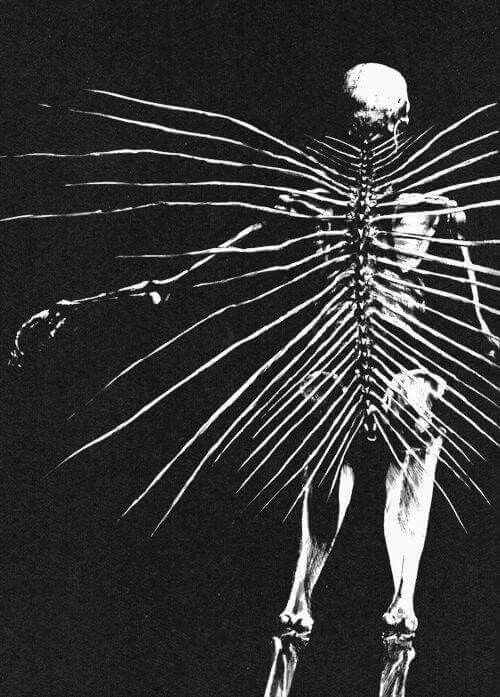
“We rest. – A dream has power to poison sleep;
We rise. – One wandering thought pollutes the day;
We feel, conceive or reason, laugh or weep;
Embrace fond woe, or cast our cares away:
It is the same! For, be it joy or sorrow,
The path of its departure still is free:
Man’s yesterday may ne’er be like his morrow;
Nought may endure but Mutability.”
Percy Bysshe Shelley, Mutability (1816)
#romantic goth#dark acadamia aesthetic#dark academia#chaotic academia#chaotic academic aesthetic#downtown girl aesthetic#2015 aesthetic#golden indie#gothic literature#victorian goth#goth aesthetic#gothic#goth#gothicliterature#romantic literature#romantic#darkest academia#dark acadamia quotes#dark academia literature#dark aesthetic#bookworm#mopey goth
28 notes
·
View notes
Text

Lucine stood wreathed in winter’s scorn… her porcelain gaze steeped in centuries of silvern mists and unhallow'd vows.
Arthur Crow © 2024
#poetrycommunity#poem#poemsdaily#poetrylovers#darkpoetry#darkpoetrysociety#gothicbeauty#quotesdaily#vampirelove#vampire#vampirebooks#gothic#dark#vampireaesthetic#gothicliterature
28 notes
·
View notes
Text

The Picture of Dorian Gray by Oscar Wilde Shawl Scarf Wrap.
#ThePictureOfDorianGray#OscarWilde#ClassicLiterature#BookLover#Bookish#LiteraryFashion#DarkAcademia#GothicLiterature#Bibliophile#BookishStyle#Bookworm#LiteraryGift#BookishAccessories#BookishGifts#ClassicBooks#AestheticFashion#BookAddict#BookObsessed#LiteratureLover#VictorianStyle#GothicAesthetic#BookishWrap#ShawlWrap#BookMerch#GothicStyle#BookishLife#PhilosophicalFiction#DorianGray#OscarWildeQuotes#universalzone
2 notes
·
View notes
Text
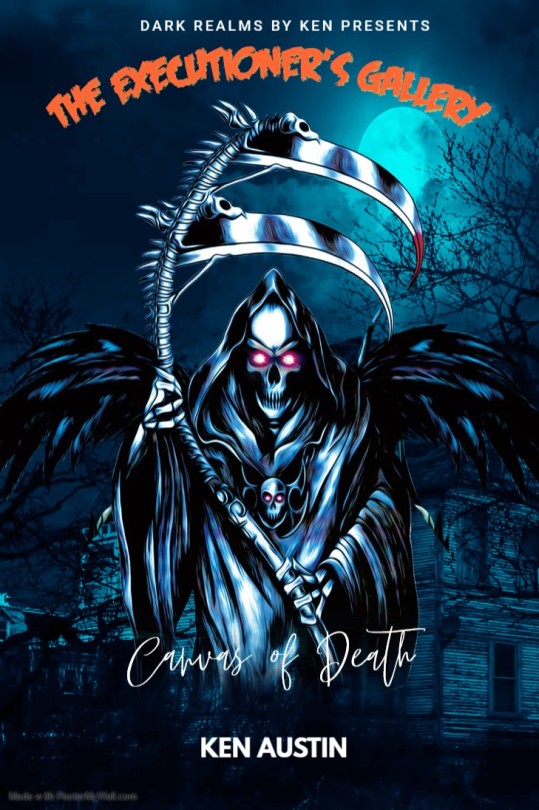
My new short horror story, The Executioner's Gallery: Canvas of Death, is now available on Amazon Kindle for $0.99. It is 37 pages long and can be found at https://www.amazon.com/dp/B0DQGTMMKD.
An art curator uncovers a collection of paintings that depict violent executions from a bygone era. As he becomes increasingly consumed by the artwork, he inadvertently awakens the spirits of the executed individuals.
#folk horror#horror#psychological horror#book writing#HorrorFiction#WritingCommunity#HorrorWriters#LiteraryHorror#DarkFiction#HorrorNovels#CreativeWriting#SpeculativeFiction#WritersOfInstagram#BookLovers#AmWriting#ThrillerBooks#HorrorReaders#WritersLife#GothicLiterature#HorrorLit#Storytelling#PsychologicalHorror#IndieAuthors#FictionWriters
2 notes
·
View notes
Text
The Nuckelavee's Curse: A Chilling Tale from Orkney's Shores
Delving into the shadowy depths of Orcadian folklore tonight. The Nuckelavee awaits...
Torrance, James. The Nuckelavee Chasing an Islander. 1901. Scottish Fairy and Folk Tales, by George Douglas, Walter Scott, 1901, p. 162. Wikimedia Commons The storm rages around the Orkney islands, a fury of wind and water that lashes against the cliffs, sending spray high into the air. Waves crash against the rocky shore, their thunderous roar echoing across the desolate landscape. But there is…
#Celtic mythology#creature#creaturefeature#culture#dark#darkacademia#demon#Folklore#folkloreandmyth#gothic#gothicliterature#hiddenhistory#history#Horror#horse#horse demon#island folklore#islands#legend#monster#monstersandmyths#myth#Mythology#Norse mythology#Nuckelavee#Orcadian folklore#Orkney#Scotland#Scottish folklore#sea
2 notes
·
View notes
Text
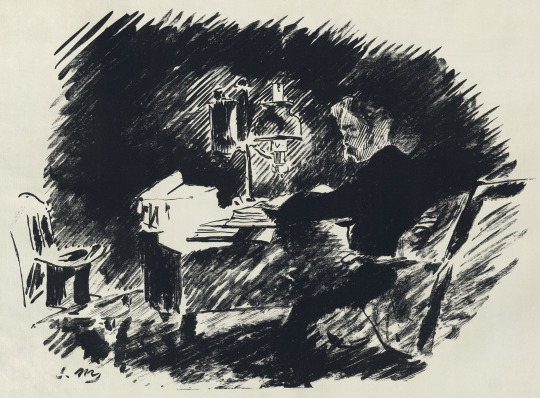
the raven by édouard manet (1875)
3 notes
·
View notes
Text
Shadows of the Last City
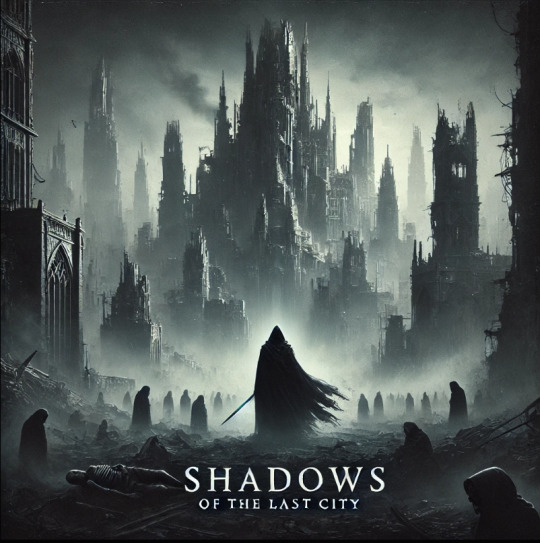
Summary: In the forsaken city of Aetherhold, where shadows intertwine with despair, Faelion, a solitary mutant, navigates the ruins of a world ravaged by plague and fear. Amidst the echoes of death, he discovers Nerea, a timid artist whose fiery hair and gentle spirit spark a flicker of hope in him. As he carefully aids her family, their paths converge in a dance of trust and terror. Haunted by their pasts, they grapple with the darkness surrounding them. In a realm where love battles dread, their slow-burning connection illuminates the shadows, whispering of a fragile redemption amid the chaos of a crumbling existence. Chapter 1: The Ruins of Aetherhold Chapter Summary: In the forsaken city of Aetherhold, Faelion, a solitary mutant, navigates a world steeped in decay and fear. Haunted by his past, he conceals his healing powers, yearning for connection. As bounty hunters prowl, he remains a phantom in the shadows, seeking a flicker of hope amid darkness.
Overall Story Warnings: Dark Themes, Violence, Death, Blood, Mental Struggles, Isolation. Disclaimer: Sadly I lost my previous account, I had opened it ages ago and for the life of me I cannot remember the email I used. I want to take the chance to share my stories with you all. If you are interested in Fantasy stories, make sure to give my stories a go. I take a lot of inspiration from the Witcher as it is my all time favourite fantasy world. This is going to be a multichapter story. Feedback welcome. Please do not copy or translate my work. ° ° ° ° ° ° ° ° ° ° ° ° ° ° ° ° ° ° °
In the forsaken city of Aetherhold, remnants of a once-thriving civilization lay crumbled and forgotten, swallowed by the relentless grasp of time. The streets, lined with decaying buildings and shattered dreams, echoed with the whispers of lives lost to a plague that had long since ravaged the populace. Shadows flickered beneath the pallid glow of a dying sun, casting a haunting light over the alleys where fear reigned supreme.
Aetherhold was a fractured world, where the struggle for survival had forged a landscape of distrust and desperation. Ordinary humans, gripped by terror of the unknown, cast wary glances at one another, their faces drawn tight with the weight of sorrow. Among them were the mutants, once the hopeful outcome of ambitious experiments to create superhumans, now hunted like vermin for their powers. They were the pariahs of society, their existence a constant reminder of humanity’s failed aspirations and darker impulses. The air was thick with the stench of decay, while the howling winds carried the wails of the afflicted, a symphony of despair that filled the empty spaces.
Bounty hunters prowled the streets like wolves, their eyes glinting with predatory hunger as they sought the mutants cast aside by society. Ruthless and driven by the promise of reward, they thrived in this unforgiving landscape, a cruel game of cat and mouse unfolding beneath the shadows. In this world, survival hinged on the ability to blend into the darkness, a lesson Faelion had learned all too well.
Faelion was a tall figure, a spectre draped in shadows, with long white hair that flowed like silver against the encroaching darkness. His blackened eyes—voids that seemed to absorb the light—held a depth of sadness and longing, a reflection of the life he could never lead. He moved with an unsettling grace through the ruins of Aetherhold, his presence both haunting and majestic, yet his heart ached for connection, a longing buried beneath layers of fear and despair.
As he wandered through the crumbling streets, Faelion found fleeting solace in the remnants of art that adorned the dilapidated buildings. Faded murals and graffiti whispered of a time when creativity had thrived, before the plague and the terror of mutants overshadowed the vibrancy of life. He paused to trace the lines of a painting, feeling a spark of inspiration ignite within him, a flicker of the humanity he once cherished. Although he was feared and hunted, he possessed the power to heal, not just physical wounds, but the emotional scars left by a world torn asunder.
Yet, even with his gifts, Faelion lived in solitude, helping few people who dared to seek his help for little reward operating like a phantom in the night. His magic eased the pain of the dying, but he remained concealed, hidden from those he wished to save. Each act of kindness was shadowed by the risk of discovery, a constant reminder of the fine line he walked between saviour and monster. Darkness offered safety, yet it deepened the loneliness that clung to him like a shroud.
The dusty tomes salvaged from abandoned libraries were his only companions. Their fragile pages, filled with the wisdom of ancient scholars and poets, expanded his understanding of the world, offering a glimpse into a life just out of reach. He spent countless nights poring over their words, finding solace in the inked thoughts of those who had once walked the earth. Yet, no book could fill the void left by human connection, no tale could substitute for the warmth of companionship.
As twilight descended upon Aetherhold, the city transformed. The dying sun bled crimson across the sky, casting long shadows that stretched like ghostly fingers across the cracked pavement. Faelion moved through the twilight, a solitary figure draped in darkness, his heart heavy with unspoken desires. The weight of despair hung in the air, thick and suffocating, yet within that darkness flickered a tiny ember of hope.
He often lingered at the edges of the town square, where remnants of life still flickered like dying embers. Here, in this forsaken heart of the city, he would observe the ordinary humans. A weary mother cradling her feverish child, a man scrounging for food amidst the rubble, their faces etched with worry. It was a scene that tugged at the fragments of his heart, the empathy he felt for their suffering intertwining with his own.
But hope was a dangerous thing in Aetherhold. It could lead to moments of recklessness, a slip of the mind that could bring about disaster. Faelion had seen it happen before. Foolish mutants who allowed themselves to be seen, who thought kindness could overshadow fear. They were hunted mercilessly, their lives snuffed out like candles in a tempest or forced to serve tyrants.
As the last vestiges of daylight faded into the abyss, Faelion decided to retreat into the darkness of the alleys. Each step he took felt both like a burden and a release, a reminder of the duality of his existence. He had the power to heal, yet the world saw him as a monster, a reminder of humanity’s darker impulses.
But even monsters craved connection. As he wandered deeper into the night, he could not shake the feeling that he was not entirely alone. There was something lurking in the shadows, a sense of being watched that prickled at the back of his mind. He paused, scanning the darkness for movement, heart pounding in his chest. The city was alive with whispers, and the air crackled with anticipation.
Then, like a flicker of lightning illuminating the depths of a storm, he caught sight of a figure in the distance. A young woman, cloaked in shadows, her fiery red hair cascading down her shoulders like a halo of embers. She moved with a grace that captivated him, a stark contrast to the decay surrounding her. In that moment, Faelion felt an inexplicable pull, an unquenchable thirst for connection igniting within him.
But as quickly as the feeling surged, fear clamped down like iron chains. She was ordinary, she would fear him if she knew what he was. He could not allow himself to be seen, not now, not ever. With a heavy heart, he stepped back and sighed.
And so, Faelion continued his solitary existence in the haunting ruins of Aetherhold, navigating a world filled with death and despair. He resolved to persist in the shadows, to heal in secret, and cling to the fragile hope that one day, he might step into the light, if only the darkness would let him.
As the moon rose high in the sky, bathing the city in an eerie silver glow, Faelion vanished into his hiding spot in the city. TBC Chapter 1 | Chapter 2 | Chapter 3 | Chapter 4 | Chapter 5...
#FantasyFiction#GothicLiterature#DystopianFiction#SlowBurn#DarkFantasy#WorldBuilding#WritersOfTumblr#OriginalCharacter#witcher#henry cavill#dark themes
3 notes
·
View notes
Text
Count Dracula: An Everlasting Icon Between Legend and Modernity
Count Dracula, a legendary and iconic figure, has captivated the collective imagination for over a century. Originating from Bram Stoker's 1897 Gothic novel "Dracula," the character has become the quintessential vampire, influencing countless film, television, and literary adaptations. But what makes Count Dracula so enduring and relevant? And how can we reinterpret this figure through modern art? In this context, the "Transylvanian Dracula Count Vectorized Art Pack" offers a new perspective, blending tradition and innovation.
The Myth of Dracula
Count Dracula is partly inspired by the real Vlad III, also known as Vlad the Impaler, a 15th-century prince of Wallachia (now part of Romania). Vlad was infamous for his cruelty and use of impalement as a method of execution, making him an ideal inspiration for Stoker's bloodthirsty character. However, Dracula is not merely a reflection of Vlad; he is also a symbol of the hidden fears and desires of Victorian society, embodying themes of power, sexuality, and death.
The Evolution of Dracula in Art and Media
Since Dracula's debut, his image has been shaped by countless artistic representations. Classic films like the 1931 "Dracula" starring Bela Lugosi and the 1992 "Bram Stoker's Dracula" directed by Francis Ford Coppola have helped solidify the vampire's look and aura in the collective imagination. In these representations, Dracula is often depicted as an elegant and mysterious aristocrat, endowed with a dark and seductive charm.
"Transylvanian Dracula Count Vectorized Art Pack": A New Interpretation
The "Transylvanian Dracula Count Vectorized Art Pack" represents a modern and stylized interpretation of Count Dracula. Using vectorization techniques, this art pack reimagines the vampire in a way that blends classic elements with contemporary aesthetics. The distinctive features of the Count – the cloak, prominent fangs, aristocratic appearance – are maintained but revisited with surprising realism, despite being vector-based.
Features of the Art Pack
Realism and Elegance: Despite the vector technique, the portrait maintains a high level of realism, highlighting accurate details and a faithful representation of the character.
Minimalism without Colors: The absence of strong and contrasting colors lends a timeless refinement to the portrait, allowing focus on the details and technical mastery of the artwork.
Versatility: The vectorized art pack is highly versatile, usable in digital projects, prints, merchandise, and more, demonstrating how Count Dracula's image can adapt to modern design needs.
The Significance of Reinterpretation
Reinterpreting Dracula through vector art is not just an aesthetic exercise but also a way to keep a historical character alive and relevant. This reinterpretation allows for a renewed interest in the Dracula myth, making it accessible and attractive to new generations.
Count Dracula continues to be a figure of great fascination and relevance. Through works like the "Transylvanian Dracula Count Vectorized Art Pack," we can see how modern art can revisit and adapt classic myths, keeping their essence alive while giving them new life and modernity. The result is a fusion of tradition and innovation that celebrates the immortality of Count Dracula, both in legend and art.
#Dracula#VampireArt#GothicLiterature#HorrorArt#ModernArt#CountDracula#TransylvanianVampire#DraculaLegend#BramStokersDracula#DraculaVectorArt
3 notes
·
View notes
Text
"Believe nothing what you hear and half of what you see"
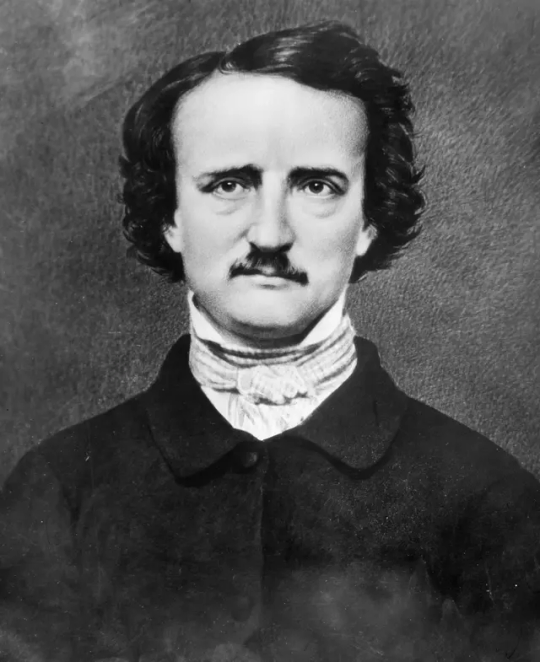
Edgar Allan Poe was an American writer, poet, author, editor, and literary critic who is best known for his poetry and short stories, particularly his tales of mystery and the macabre. He is widely regarded as a central figure of Romanticism and Gothic fiction in the United States, and of American literature.
Born: 19 January 1809, Boston, Massachusetts, United States
Died: 7 October 1849 (age 40 years), Washington Medical College
The circumstances surrounding Poe's death remain a mystery. He was found delirious on the streets of Baltimore, Maryland, and died shortly thereafter. Various theories have been proposed, including alcoholism, substance abuse, rabies, and even foul play, but the exact cause of his death has never been conclusively determined.
Poe is often credited with inventing the modern detective story with his character C. Auguste Dupin in "The Murders in the Rue Morgue." Dupin's analytical prowess set the stage for future fictional detectives, including Arthur Conan Doyle's Sherlock Holmes.
Poe briefly served in the United States Army under the alias "Edgar A. Perry." He enlisted in 1827 and attained the rank of sergeant major before seeking discharge to pursue a writing career. He also attended the United States Military Academy at West Point but was expelled after deliberately neglecting his duties.
Poe married his first cousin, Virginia Clemm, when she was just 13 years old, and he was 27. Their marriage, though unusual by modern standards, was reportedly loving. Virginia's early death from tuberculosis deeply affected Poe and influenced some of his later works.
Despite his literary success, Poe struggled financially throughout his life. He often faced poverty and had difficulty supporting himself through his writing alone. His famous poem "The Raven" brought him some recognition and acclaim, but it did not provide substantial financial rewards.
#EdgarAllanPoe#Poe#TheRaven#GothicLiterature#HorrorStories#Mystery#Macabre#Romanticism#DetectiveFiction#PoePoetry#LiteraryCritic#AmericanLiterature#ShortStories#ClassicLiterature#Baltimore#VirginiaClemm#PoeMuseum#CaskOfAmontillado#TheTellTaleHeart#Nevermore#quoteoftheday#today on tumblr
5 notes
·
View notes
Text
The Influence of Gothic Culture on Modern Music
Gothic culture, with its dark, brooding aesthetic and profound thematic depth, has left an indelible mark on modern music. Emerging from the post-punk movement of the late 1970s and early 1980s, gothic culture has developed to become a powerful force, influencing various genres, from gothic rock to darkwave, metal, and even electronic music. This article delves into the profound impact of gothic culture on modern music, exploring its roots, key influences, and its enduring legacy.
Origins and Evolution
Gothic culture finds its roots in the gothic rock scene, spearheaded by bands like Bauhaus, Siouxsie and the Banshees, and The Cure. These pioneers crafted a sound characterized by melancholic melodies, haunting lyrics, and a dark, atmospheric aesthetic. Their music, imbued with themes of existential dread, love and loss, and the macabre, set the stage for a cultural movement that would transcend music.
As gothic culture developed, it embraced elements from other genres. The ethereal wave brought a more ambient and dreamlike quality, while darkwave combined gothic rock's intensity with electronic music's hypnotic rhythms. This fusion of sounds and styles allowed gothic culture to permeate various musical landscapes, creating a diverse and ever-developing genre.
Key Influences
Thematic Depth: At the heart of gothic music lies a deep exploration of themes often shunned by mainstream culture. Existential angst, spiritual isolation, and the beauty found in darkness are common motifs. These themes resonate deeply with listeners seeking a more profound connection with music that mirrors their inner turmoil and reflective nature.
Aesthetic and Imagery: Gothic culture's visual aesthetic—marked by dark clothing, elaborate makeup, and a penchant for the theatrical—has influenced modern music's presentation. Artists like Marilyn Manson and Evanescence have adopted gothic visual elements to complement their music, creating a cohesive and immersive experience for their audience.
Literary Inspiration: Gothic literature, from the works of Edgar Allan Poe to Mary Shelley's "Frankenstein," has been a significant source of inspiration for gothic musicians. The storytelling aspect of gothic literature, with its rich, atmospheric descriptions and complex characters, translates seamlessly into the lyrical and conceptual aspects of gothic music.
Modern Gothic Music
Today, the influence of gothic culture is evident in the works of artists across various genres. Bands like Nightwish and Within Temptation have melded gothic aesthetics with symphonic metal, creating grandiose soundscapes that evoke both beauty and despair. Electronic artists such as Gary Numan and Depeche Mode have incorporated dark, gothic elements into their synth-driven music, proving the genre's versatility.
The rise of neoclassical darkwave, spearheaded by acts like Dead Can Dance, has brought a new dimension to gothic music, blending classical influences with haunting, ethereal sounds. This genre's fusion of ancient and modern elements exemplifies gothic culture's ability to adapt and evolve while maintaining its core essence.
The Enduring Legacy
The enduring appeal of gothic culture in modern music lies in its ability to provide an emotional outlet and a sense of community for those who feel marginalized or disconnected from mainstream society. Its themes of existential reflection and spiritual exploration resonate across generations, offering solace and understanding to listeners.
Moreover, the visual and thematic richness of gothic culture continues to inspire artists to push boundaries and explore new creative territories. As music continues to evolve, the shadows cast by gothic culture will undoubtedly continue to shape and influence the artistic landscape.
In conclusion, the influence of gothic culture on modern music is because of its profound emotional depth and aesthetic power. From its origins in gothic rock to its pervasive presence across multiple genres, gothic culture remains a vital and transformative force in the world of music. Its ability to evoke deep emotions, challenge societal norms, and inspire artistic innovation ensures that the gothic spirit will endure, resonating through the shadows of modern music for years to come.
#GothicCulture#GothicMusic#Darkwave#GothicRock#PostPunk#EtherealWave#DarkAesthetic#ExistentialDread#MacabreBeauty#GothicInfluence#ModernMusic#GothicAesthetic#DarkMusic#HauntingMelodies#GothicArt#GothicLiterature#MusicHistory#GothicStyle#AlternativeMusic#GothSubculture
2 notes
·
View notes
Text


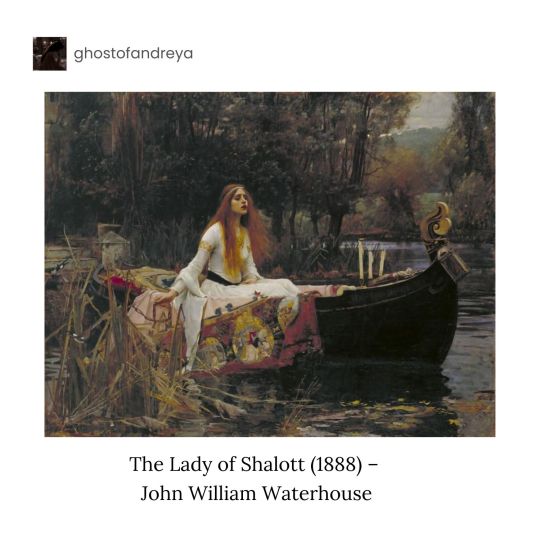


Do you believe in love that lingers beyond life?
#darkacademiabooks#wutheringheights#romance#moodyvibes#classicliterature#gothicliterature#victoriangothic#classicbooks#booklr#books and reading#currently reading#moody aesthetic#wuthering heights#emily bronte#book quotes#quotes#aesthetic
44 notes
·
View notes
Text
Echoes in the Quiet.
To the one who treads softly through the shadowed halls, the one who finds me in the silence between breaths.
I am the echo beneath your footsteps, the flicker of candlelight in a room you thought empty.
I carry no name, but I am known by the thread you hold, a thread woven from whispered promises and half-remembered dreams.
If you find the lock without a key, it is because you hold the shape of the door, even when the walls shift and the mirrors twist.
I am not yours to claim, nor you mine to keep, but in the spaces where fear loosens its grip, we meet like secret stars caught between dusk and dawn.
Should you listen closely, you will hear the riddle I breathe into the dark: Find me not by seeking, but by simply staying.
And if you stay, you may find I am not a ghost after all, but the pulse you never knew you needed.
#EchoesInTheQuiet#Poetry#DarkPoetry#GothicPoetry#SpiritualPoetry#HauntingWords#AtmosphericWriting#LiminalSpaces#Dreamlike#WhispersInTheDark#MelancholyMagic#EtherealVibes#SoftDarkness#BetweenDuskAndDawn#ShadowAndLight#LonelyBeautiful#RomanticMysticism#SecretStars#GhostHeart#CandlelightThoughts#GothicLiterature#ProsePoetry#WritersOfInstagram /#WritersOfTumblr#IndieAuthors#DarkAcademia#SlowBurnSoul#EmotionalAlchemy#FoundInTheSilence#originalwriting
1 note
·
View note
Link
"The Haunted Doll's House" is a 1923 short story by M. R. James, collected by him in A Warning to the Curious and Other Ghost Stories. It was commissioned by Queen Mary, wife of George V, as a miniature book for her famous Dolls' House, which can still be seen in Windsor Castle. It is in many ways a typical James story, thematically linked to other works of his, especially "The Mezzotint"
#classictales#creepynarratives#eerieliterature#ghoststories#gothicliterature#haunteddollshouse#historicalfiction#literaryhorror#literarylegends#miniaturebook#mrjames#mysterioustales#paranormalfiction#queenmary#shortstorycollection#spookystories#terrorintales#timelesshorror#victorianghosts#windsorcastle
0 notes
Text
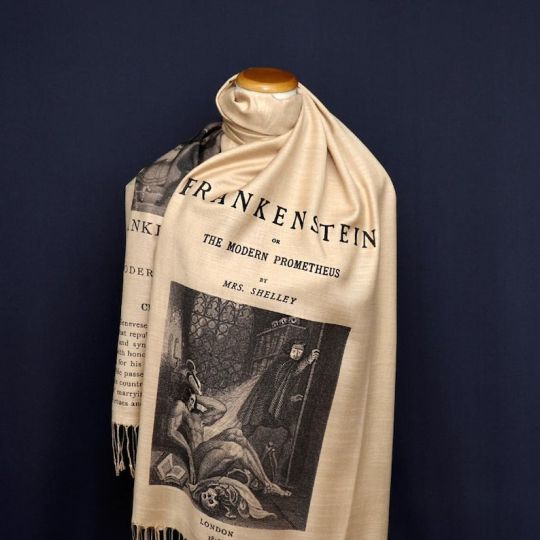
Frankenstein by Mary Shelley Shawl Scarf Wrap. Frankenstein; or, The Modern Prometheus by Mary Shelley Scarf. Book scarf, Bookish Gift.
#FrankensteinShawl#MaryShelley#ModernPrometheus#BookScarf#BookishGift#LiteraryFashion#GothicLiterature#FrankensteinFans#BookLoverGift#LiteraryMerch#LiteratureLovers#BookishAccessories#GothicBooks#BookishStyle#ClassicLiterature#MaryShelleyBooks#LiteraryGift#ReadingAccessories#universalzone#universal zone#books#bookworm#bookish gifts#bookish#bookstagram#UniversalZoneScarves#frankenstein#frankenstiensmonster
3 notes
·
View notes
Text
Cain
Character sheet
Full Name: Cain
Alias/Nickname: None (though Delphine may come up with one later)
Age: Ancient (older than any other vampire, werewolf, or witch)
Species: Vampire (formerly human, with a soul bound by a witch’s curse)
Alignment: Chaotic Neutral
***
Personality
Selfish & Volatile – He doesn’t care about others and only acts in his own interest.
Charming but Dangerous – He can be alluring when it benefits him, but his temper is unpredictable.
Cold & Calculating – Sees emotions as a weakness and only values power and survival.
Egotistical & Sarcastic – Amused by human struggles and often makes snide remarks.
Possessive & Territorial – While he doesn’t care for most, he can become dangerously attached to what he deems his.
Has a Sadistic Streak – Enjoys teasing, provoking, and making others uncomfortable, especially Delphine.
***
Physical description
Height: Tall and imposing
Build: Lean, but incredibly strong
Skin: Pale, almost unnaturally so
Hair: Jet black, always slightly unkempt
Eyes: Dark brown, nearly black, with a red tint when his hunger or emotions intensify
Distinguishing Features:
A perfect, almost statuesque beauty, which makes him both alluring and intimidating
Hands calloused from centuries of combat and survival
A presence that feels both magnetic and predatory
***
Abilities & Strengths
Vampiric Strength & Speed – Stronger and faster than any normal vampire.
Immortality – Cannot die from age or disease.
Enhanced Senses – Can hear heartbeats, smell emotions, and see in total darkness.
Regeneration – Heals rapidly, even from fatal wounds.
Unbound by Traditional Vampire Weaknesses – Sunlight does not burn him, but it does weaken him.
Blood Affinity – Gains memories and emotions from those he feeds on.
Master Combatant – Has centuries of experience in battle, making him nearly impossible to defeat.
***
Weaknesses & Limitations
Sunlight Weakens Him – While it doesn’t burn him, it drains his strength significantly.
Bound Soul – The curse that bound his soul makes it impossible for him to truly die—but it also means he cannot fully escape pain or suffering.
Emotionally Detached – Cain feels little to no remorse, making it hard for him to form real connections.
Overconfident & Reckless – He often underestimates enemies, believing himself untouchable.
Blood Dependency – If he goes too long without feeding, he becomes weaker and more aggressive.
***
Aesthetic
Cain’s aesthetic perfectly balances sophistication and danger, making him both alluring and intimidating. His dark clothing, tailored yet effortless style, and gothic undertones reinforce his mysterious and deadly nature.
He plans ahead with his flask of blood and dagger but also shows restraint by not smoking near Delphine. His watch symbolizes his awareness of time, despite being nearly immortal.
***
Character Arc
Starts as an untouchable, selfish being, but Delphine challenges his detached existence.
Begins to feel emotions he thought he had lost, making him both stronger and more vulnerable.
Forced to confront his past as Delphine gets deeper into supernatural conflicts.
Faces a growing internal struggle—continue his cold, isolated existence, or embrace something new with Delphine.
#oc#originalcharacter#darkromance#vampireaesthetic#gothicfiction#antihero#darkprotagonist#immortal#fallenangel#nephilim#darkcottagecore#gothicromance#hauntinglybeautiful#tragicromance#supernatural#darkfantasy#gothicliterature#literaryaesthetic#mystical#characterdesign#writercommunity#indieauthor#etherealbeauty#darkallure#forbiddenlove#undyingpassion#dangerouscharm#gothicaesthetic#mysteryandmagic#immortalbeing
0 notes